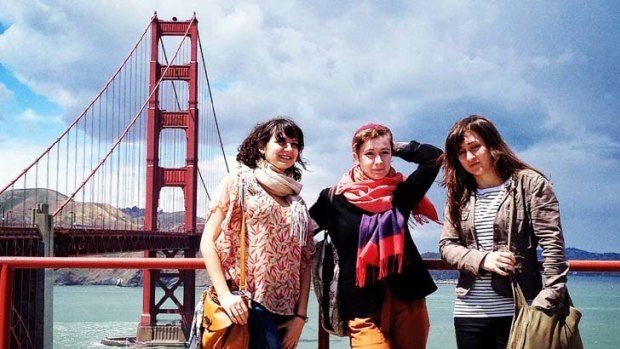By Neil Tweedie
THE Golden Gate Bridge is 75 years old today, a masterpiece of construction marrying strength and grace. There are longer suspension bridges but none more recognisable than America's art deco gateway to the Pacific. Opened on May 27, 1937, it took 4½ years to build, a vote of confidence in the future cast in the depths of the Great Depression. Spanning the Golden Gate Strait, the entrance to San Francisco Bay, the bridge draws the eye, its two great towers, painted orange-vermilion, glowing in the sunset of a clear day or looming majestically out of the fog.
The bridge is something else, though: it is the world's premier venue for suicide.

A construction masterpiece with many moods … tourist photo of San Francisco's Golden Gate Bridge.Credit: Getty Images/AFP
On average, a person jumps to his or her death from it every two weeks, more than 1500 to date. Amazingly, one in 50 jumpers survives the four-second plunge, equivalent to 25 storeys, some crippled for life but a few only slightly injured.
''There is a kind of allure to the bridge,'' says John Bateson, former director of a crisis centre for the depressed and suicidal covering the bay area.
Mr Bateson has made a study of the bridge and its siren attraction to those seeking an end to personal torment. In his book, The Final Leap, he explains how it attained its dark status and asks why no definitive action has been taken to stop people jumping. The solution, the erection of a high barrier or safety net, is obvious but has so far been thwarted.
''A lot of people in the bay area would have no idea that the bridge has been the setting for such a huge number of suicides,'' he says. ''The people who run the bridge have no desire to publicise the reality of the situation.''
Notes left behind suggest most jumps are planned. ''Do not notify my mother. She has a heart condition,'' wrote Stephen Hoag, 26. ''Please forgive me,'' wrote Marissa Imrie, 14. ''Everyone is better off without this fat, disgusting, boring girl.'' Diane Hansen, 30, jumped with a white box containing her mother's ashes. Eilert Johnson, 70, held his hat to his head as he fell. At least three children have been thrown to their deaths by parents who then followed them. Survivors say the four-second drop lasts an eternity.
The crossing is controlled by the Golden Gate Bridge Highway and Transportation District. It opposes a barrier on grounds of aesthetics and the right of pedestrians and motorists to an uninterrupted view of the bay. As usual, money is the big factor. The installation of a barrier or safety net would cost as much as $56 million. Instead, the authority relies on surveillance cameras, patrols and the willingness of the public to intervene. Lawsuits by relatives of the dead alleging negligence on the part of the authority have proved fruitless.
''There is a stigma to suicide,'' Mr Bateson says, ''People are unaware that it's the most preventable form of death. When the Golden Gate Bridge has a barrier, it will become a monument to compassion as well as beauty. But not before.''
In its 75th year, death takes the shine off the Golden Gate. A jumper pointed out the obvious. ''Why,'' he asked in his final note, ''do they make it so easy?''
Lifeline: 13 11 14
Telegraph, London